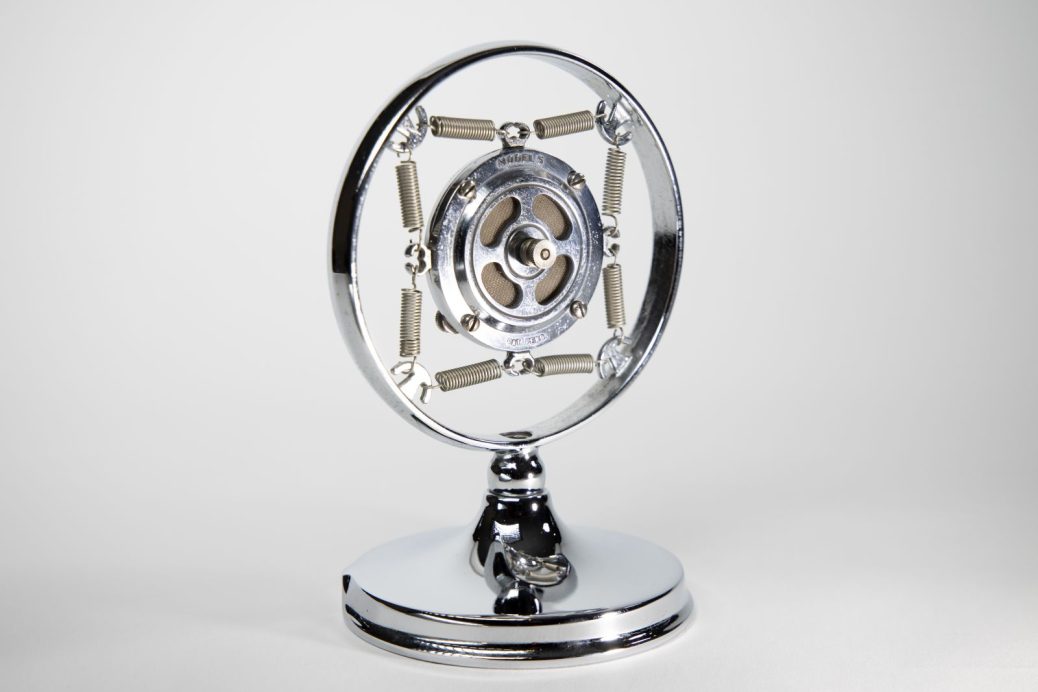Let’s delve into the fascinating history of carbon button microphones, foundational in shaping today’s advanced microphone technologies.
Sign Up for Free Today
Find the perfect voice for your job today, or sign up as a talent to start booking voice over work on Voices.
In this article
- Key Takeaways:
- A Brief History:
- Carbon Button Microphone Technology:
- Sound Waves and Electrical Signals:
- High-Level Audio Signals and Low DC Voltages:
- Application in Telephony and Radio Broadcasting:
- The Decline and Transition:
- Niche Applications Today:
- Comparison with Modern Alternatives:
- Advantages and Disadvantages:
- Summary:
- FAQs:
In this blog, we’ll examine how these microphones have evolved over time and explore how they compare to modern alternatives in terms of technology and telecommunication.
Key Takeaways:
- Carbon button microphones revolutionized telephony and radio broadcasting in the late 19th century, due to their high output, affordability, and ubiquity.
- Despite advantages such as simplicity and ruggedness, they’ve dipped in popularity due to their limited frequency response and noise presence.
- Today, they find niche applications in communication systems and in vintage models, even in artistic pursuits like beatboxing.
A Brief History:
Invented by David Edward Hughes in the 1870s, carbon microphones became a standard for telephone conversations and radio broadcasts.
Though the creation of dynamic and ribbon microphones decreased their dominance, they remain relevant in certain situations due to their compatibility with vacuum tube amplifiers.
Carbon Button Microphone Technology:
Understanding carbon button microphones requires an understanding of their underlying technology, pivotal in the early days of telephony and radio, enabling cost-effective long-distance communication.
Sound Waves and Electrical Signals:
These microphones feature a design with carbon granules shielded by a thin metal diaphragm. Sound waves entering the device modulate electrical resistance, a design that was vital when radio was beginning its rise in popularity.
High-Level Audio Signals and Low DC Voltages:
Carbon button microphones use low DC voltages and high-level audio signals to control current flow and sound amplification. Despite additional noise levels and distortion, their lower cost made them attractive for various applications.
Application in Telephony and Radio Broadcasting:
Carbon microphones allowed for long-distance calls without amplification due to their high output. By the late 1970s and 1980s, more advanced technologies, providing better sound quality and performance, superseded them.
The Decline and Transition:
The development of condenser microphones and the shift toward more advanced systems marked the decline of carbon button microphones. They were then replaced by higher-quality counterparts offering improved sound recording capabilities.
Niche Applications Today:
While largely replaced, carbon microphones maintain a presence in certain sectors due to their ruggedness. Collectors and artists value traditional models like the Shure 3B, used to create distinctive sounds in beatboxing.
Comparison with Modern Alternatives:
Comparing carbon button microphones with modern alternatives can be challenging. Despite their limitations, carbon mics still offer great value due to their compatibility with existing equipment.
Advantages and Disadvantages:
Their restricted frequency range, susceptibility to noise, and limited dynamic capacity have led to the decline of carbon button microphones. However, their robust design and cost-effectiveness made them helpful in many applications.
Summary:
The history of carbon button microphones shows the continuous evolution of audio technology, emphasizing their enduring significance in niche applications, despite the emmergence of more advanced models.
FAQs:
- 1. What were carbon button microphones used for? They were pivotal for efficient long-distance voice signal transfer in telephony and broadcasting.
- 2. Who invented the carbon button microphone? In 1876, Emile Berliner pioneered the device, revolutionizing communications by allowing voice signals to be transmitted over long distances.
- 3. What is a disadvantage of a carbon microphone? It produces electrical noise and requires an external power supply, necessitating supplemental sound engineering equipment.
- 4. When was the carbon button microphone invented? Developed in 1877 by Thomas Edison, Emile Berliner, and David Edward Hughes, it became standard in voice communication technology.
- 5. How do carbon button microphones convert sound waves into electrical signals? They modulate the resistance of carbon granules between two plates due to the diaphragm’s vibration, allowing effective conversion of sound to electrical signals.

Leave a Reply